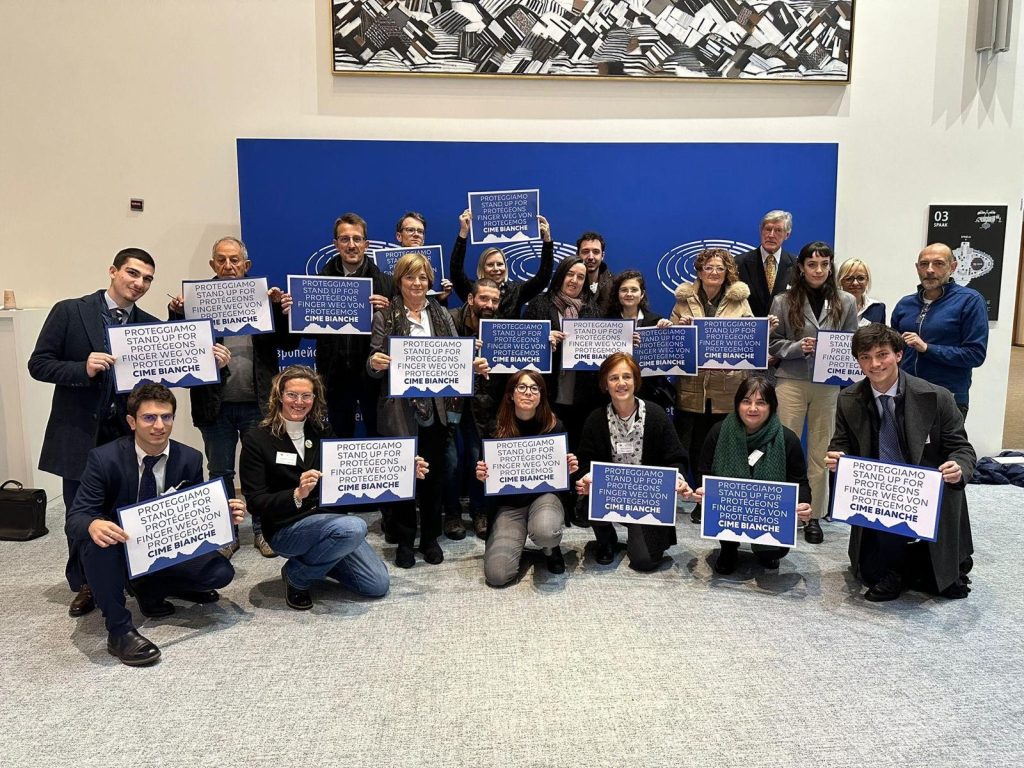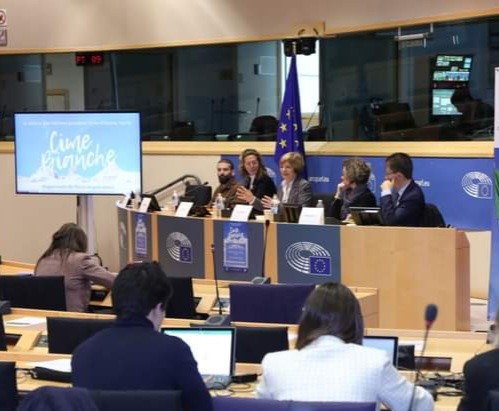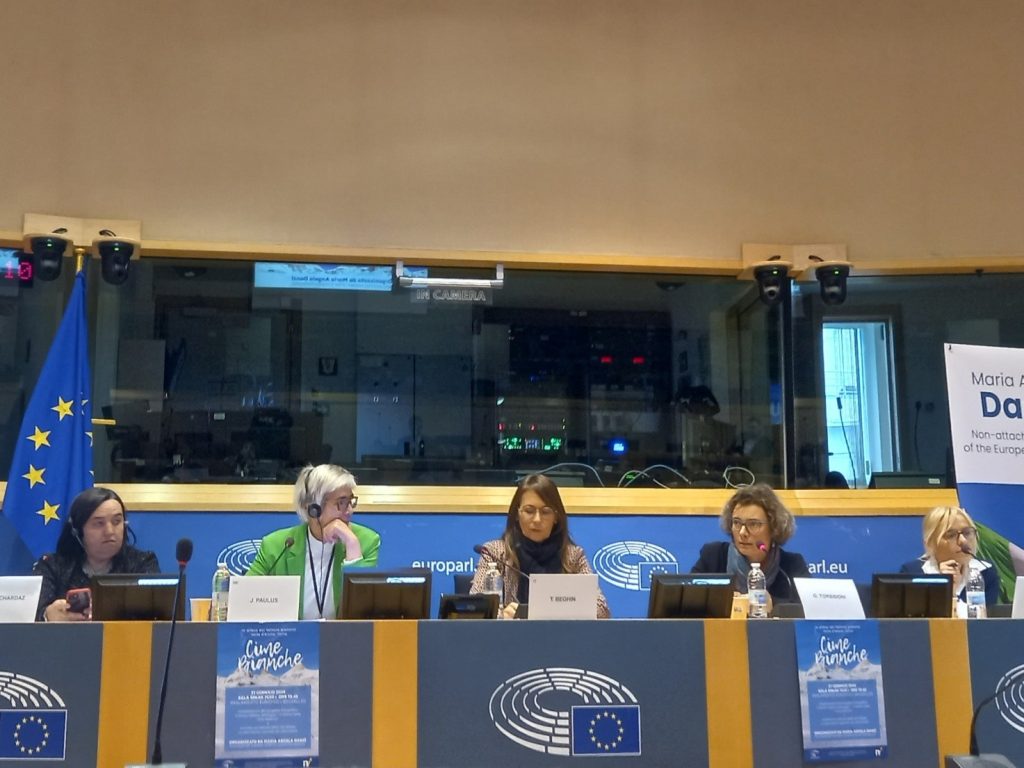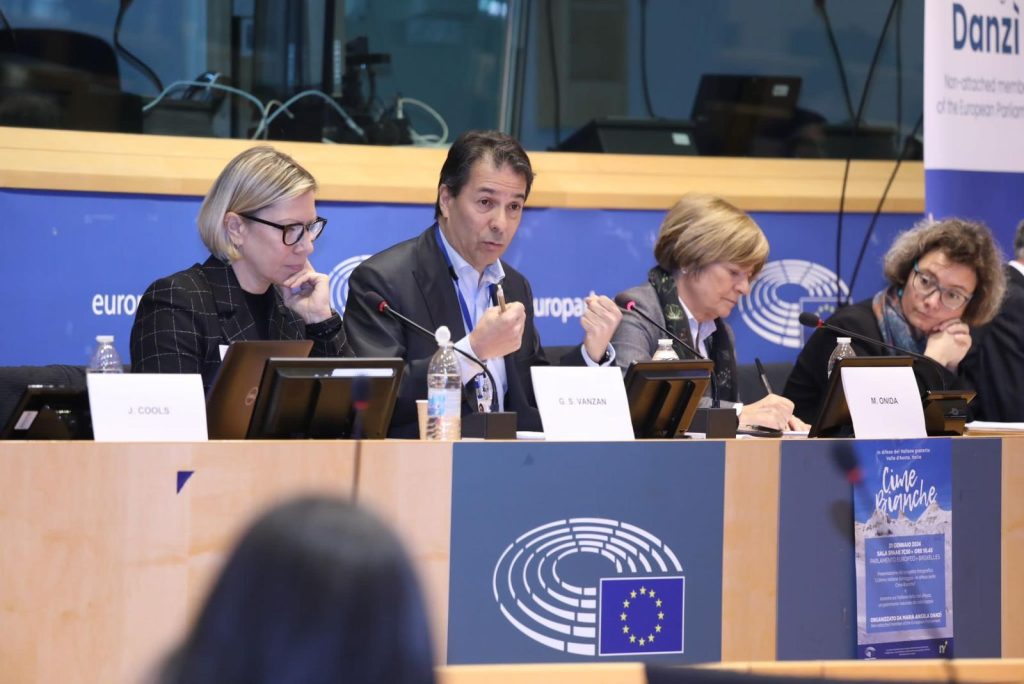Protected areas and the ski industry: The Natura 2000 site “Cime Bianche”

Located in the Aosta Valley, the Cime Bianche valley is one of the few remaining pristine areas in Italy’s Western Alps but is threatened by a cable car project that the regional government intends to implement, regardless of the area being a Natura 2000 SPA-SAC site ‘Ambienti glaciali del gruppo del Monte Rosa’, falling under the Habitats and Birds Directives. The project aims to create one of the largest ski areas in Europe, connecting Italy and Switzerland.
Mountain Wilderness International was invited to speak as a stakeholder at an event on this yet untouched, wilderness area, held at the European Parliament in Brussels on January 31.
The event, organised by MEP Danzì, envisaged three panels, moderated by journalist Giulia Torbidoni: a first one describing the Cime Bianche Valley and everything that has been done so far to raise awareness (fundraising, hikes to the valley, awareness-raising events) with Annamaria Gremmo, Marco Soggetto and Francesco Sisti, three photographers who have been fighting for years to protect the valley and have published a photo book on the area; a political panel with MEP Tiziana Beghin and MEP Jutta Paulus, Erika Guichardaz (regional councillor of the Aosta Valley) and the environmental lawyer Emanuela Beacco; and a stakeholder panel with Marco Onida (former Secretary General of the Alpine Convention), Gabriella Suzanne Vanzan, Vice President of Mountain Wilderness International, Lode Beckers Secretary General of the International Union of Mountaineering Associations (UIAA) and Jan Cools (Member of the UIAA Mountain Protection Commission).

After depicting the high naturalistic, geological, historical value of the valley, a complex and unique example of biodiversity, an ecosystem rich in water, peat bogs, lakes, wetlands, the first panel went on to illustrate the feasibility study commissioned by the government of the Aosta Valley and concluded by describing the steps taken so far to counter the implementation of the cable car project.

The second panel delved into aspects of EU and national legislation, with MEP Jutta Paulus mentioning the instruments available to the EU Commission, including infringement procedures, and how the project was reminiscent of a 1970s approach. Erika Guichardaz outlined the cost of the cable car project, which exceeds 100,000 euro, 80% borne by the region Aosta Valley, and the negative outcome of the environmental impact assessment. Emanuela Beacco explained that in a Natura 2000 site no new cableways can be built. If reasons of overriding public interest are invoked to carry out the project, they can only be long-term interests, as short-term economic interest is not sufficient to outweigh in importance the long-term conservation interests covered by the directive.

The third panel highlighted the environmental aspects, with Marco Onida recalling that the site is a heritage of all mankind, falling within the scope of the Alpine Convention. As such, in areas attracting high numbers of tourists, the regional government should strike a balance between intensive and extensive forms of tourism (art. 6.3 of the Tourism Protocol of the Alpine Convention, an international treaty between the Alpine countries and the EU). Mountain Wilderness International explained how high mountains are not safe from the impacts of climate change, with the zero-degree isotherm rising fast and 90% of Italian ski areas relying on artificial snow, and how tourism has changed with time. For the 12 million Italians who chose the mountains to spend their winter holidays in 2023, skiing ranks only fifth, after hikes in nature, food and wine, relaxing holidays and outdoor life in general, in areas of great natural beauty with no infrastructure. The UIAA outlined their role as climbing and mountaineering federation and how they value their heritage and care for the mountains, highlighting how – since the project’s sustainability claim – the EU Taxonomy Regulation determines which economic activities can really be defined as environmentally sustainable.
Regardless of the perspective, all panels agreed that the cable car project has no economic, social or environmental rationale and that the valley should be held in its pristine state, in the interest of future generations, as the surrounding area is already heavily anthropised.